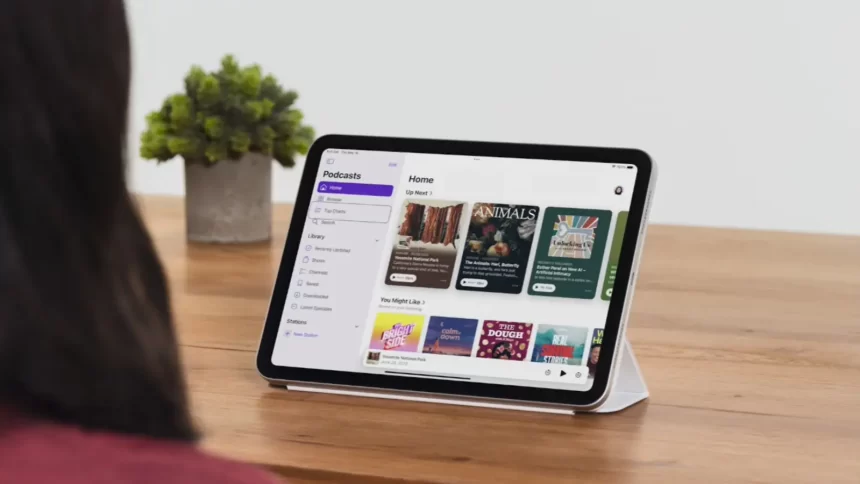Apple announced a plethora of new accessibility features coming later this year, significantly enhancing the user experience for people with various disabilities. These advancements are expected to arrive alongside iOS 18.
Eye Tracking for Effortless Control
A groundbreaking addition is Eye Tracking, empowering users with physical limitations to control their iPads and iPhones entirely through eye movements. This AI-powered feature utilizes the front camera and on-device machine learning for calibration and operation, without compromising user privacy by sharing data with Apple. Dwell Control allows users to navigate and activate app elements using just their eyes, replicating actions like button presses, swipes, and gestures.
Music Haptics: Feeling the Rhythm
For users who are deaf or hard of hearing, Music Haptics brings music to life through vibrations generated by the iPhone’s Taptic Engine. This feature works with millions of songs on Apple Music and can potentially integrate with third-party apps as well.
Enhanced Speech Recognition: Understanding Everyone’s Voice
Speech recognition receives a significant upgrade with features like Vocal Shortcuts and Listen for Atypical Speech. Optimized through on-device machine learning, these functionalities aim to improve comprehension for a wider range of users, particularly those with speech impediments.
Combating Motion Sickness with Vehicle Motion Cues
Travelers prone to motion sickness will benefit from Vehicle Motion Cues. This feature utilizes iPhone and iPad sensors to automatically activate when movement is detected. Animated dots on the screen then illustrate changes in vehicle motion, potentially mitigating nausea.
CarPlay Gets a Boost in Accessibility
Accessibility in CarPlay receives an upgrade with the introduction of Voice Control, Color Filters, and Sound Recognition. These cater to a variety of needs, including voice-enabled navigation and support for users with color blindness.
Accessibility on the Horizon for visionOS
Apple’s visionOS gains accessibility features like Live Captions, which assist users in following conversations and dialogue within apps. Apple Vision Pro advancements include enhanced caption control and compatibility with additional hearing aids. Additional features cater to users with low vision, such as Reduce Transparency and Smart Invert options.
A Range of Accessibility Improvements
Numerous existing accessibility features receive improvements as well. VoiceOver gains new voices and customization options. Magnifier benefits from a Reader Mode and improved functionality. Braille Screen Input sees enhancements, including Japanese language support. Hover Typing facilitates larger text input.
For users at risk of losing their ability to speak, a Personal Voice feature is introduced. Live Speech improvements enhance the experience for nonspeaking users. AssistiveTouch gains a Virtual Trackpad functionality. Switch Control receives upgrades, including camera-based gesture recognition. Finally, Voice Control is bolstered with support for custom vocabularies.
Celebrating Global Accessibility Awareness Day
Apple goes beyond these feature additions by celebrating Global Accessibility Awareness Day with various initiatives. Free sessions at select Apple Stores will showcase accessible apps and games. The Apple TV app and Apple Books will feature stories of empowerment. Additionally, Apple Support provides tutorials on customizing Apple devices for accessibility.
With this extensive array of advancements, Apple reaffirms its commitment to making technology accessible and inclusive for everyone.






